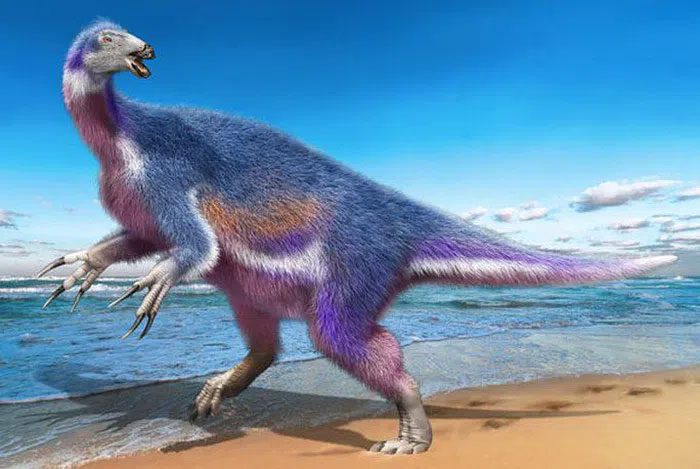Named Paralitherizinosaurus japonicus, the newly unearthed monster in Hokkaido, Japan, roamed the Earth approximately 72 million years ago during the Late Cretaceous period.

Portrait of the new monster in Japan – (Photo: HOKKAIDO MUSEUM).
According to Sci-News, it is a dinosaur belonging to the Therizinosauridae family, primarily herbivorous, with members ranging in size from large to small.
Currently, scientists have not accurately determined the size of this new species, as all that has been excavated consists of a portion of leg bones along with some vertebrae and claws.
However, the reconstruction results of the monster’s “portrait” based on this leg portion and overall data about Therizinosauridae have enabled researchers from the Hokkaido University Museum to envision a creature with strong, robust legs, sharp claws, and colorful plumage wandering along ancient coastlines.
According to a publication in Scientific Reports, which was reposted on the Nature website, the fossil fragments of this new monster were excavated from a large rock block from the Osoushinai Campanian Formation, located above the Yezo Group in Nagakawa Town on Hokkaido Island. The Yezo Group mainly consists of late Cretaceous marine sediments rich in animal fossils, including sharks, seahorses, turtles, birds, plesiosaurs, pterosaurs, and various dinosaur groups.
The presence of Therizinosauridae fossils in these marine sediments indicates that some species previously thought to inhabit only deep inland areas have adapted to coastal environments and expanded their habitats.
This is the third specimen of the Therizinosauridae family excavated in Japan; previous specimens were too limited in scope (one specimen consisted of only a single tooth, another was a part of a skull, teeth, and jaw bones) to be scientifically described.





















































